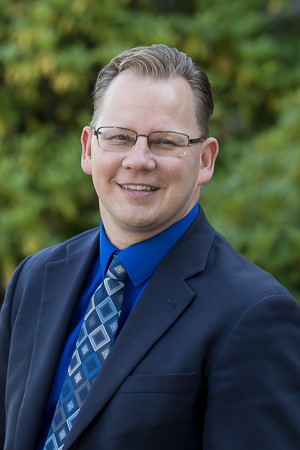OLYMPIA, Wash., September 9, 2023—The Washington Supreme Court ruled Thursday, September 7, the state is not required to fully cover school construction costs, dealing a blow to districts unable to raise the local tax dollars they need for new buildings and other facility upgrades.
In its unanimous decision, the court said Washington’s constitutional mandate for the state to amply fund basic education does not extend to capital project expenses. Rather, it envisions the state and local school districts will “share the responsibility.”

“It is certainly true that students need buildings, labs, and gyms to gain an education,” Justice Sheryl Gordon McCloud wrote for the majority. But, she noted, “it is clear that the constitution as a whole treats funding for school capital costs differently than it treats funding for other education costs.”
It creates a “workable scheme,” she wrote, in which districts can raise money from passage of levies and bonds, and, if eligible, obtain funding from the state’s school construction program.
The decision leaves untouched the existing process of requiring districts to provide some money upfront before they qualify for a cut from the state’s School Construction Assistance Program. It also leaves the door ajar for future legislative, and maybe judicial, actions to clarify the sharing of costs.
Associate Chief Justice Charles Johnson, in a concurring opinion, said the current system isn’t working as intended and can be unfair.
“The existing program does not help the districts that need it the most because they cannot pass the necessary bond,” he wrote. “The State should not selectively deny funds for high-quality education environments based on the district’s lack of local monetary support.”
He suggested there should be further consideration of whether the state should be responsible for a specific percentage of costs and if the constitution “creates an obligation that the common school construction fund be distributed in a manner that is accessible to the low-income, rural districts.”
OSPI Superintendent Chris Reykdal’s statement on school funding ruling
the Washington State Supreme Court affirmed that school construction costs are a shared responsibility between local communities and the State Legislature. The Court made clear that this funding is not the sole responsibility of the state.

I respect the Court’s decision. This month, the Office of Superintendent of Public Instruction (OSPI) will submit a budget proposal to the Governor and the Legislature that will encourage the state to uphold their share of school construction costs.
Our proposal will ask the Legislature to:
- Continue to invest in grant programs that support school construction in the primarily rural communities with smaller tax bases;
- Make new investments in clean air and energy efficiency in our school buildings; and
- Adjust the school construction funding formulas to more accurately reflect the costs to build, remodel, and renovate school buildings through updated allocations per square foot and allowable space per student.
In addition to these budget items, we will again ask the Legislature to make a commitment to lowering the local bond approval threshold from 60% to 50%, as is the threshold for all other ballot measures. The Court has affirmed that school construction is a shared responsibility. It cannot be reasonably assumed that every community can do their part with an undemocratic super-majority required to pass a bond vote at the local level in order to access the state’s share of the funding.
In the meantime, OSPI and our school districts will continue the work already funded by the Legislature to improve water quality in our school buildings and to retrofit school buildings that have the highest risk of danger in a seismic event, as determined by the Department of Natural Resources. I am appreciative of the Court’s efforts on this case, and I look forward to continued work with the Legislature to ensure each of our students has access to facilities that are safe, healthy, and equipped to support 21st-century learning.
Dismissed but not defeated
From Washington’s birth as a state until the middle of the last century, local school districts bore responsibility for building and maintaining their campuses.
In the 1960s, the state constitution was amended to include the creation of a common school construction fund. Today, the state provides grants to school districts for construction and modernization primarily through the School Construction Assistance Program.
To be eligible, current law requires a school district provide local funding “equal to or greater than the difference between the total approved project cost and the amount of state funding assistance.”
The state Supreme Court case arose from the plight of a tiny school district in Wahkiakum County, along the Columbia River, that’s been unable to qualify for a cut of state aid because its voters are rejecting bond measures.
The Wahkiakum School District has less than 500 students, more than half are low-income, and fewer than 3,500 registered voters whose per capita income is approximately $29,000. Voters most recently turned down a bond in 2020 that was to help build a high school.
In its suit, the district cited the state constitution tenet that it is the “paramount duty of the state to make ample provision for the education of all children residing within its borders.”
The district argued it “does not have the facilities needed to safely provide all its students a realistic and effective opportunity to obtain the knowledge and skills encompassed within the word ‘education,’” according to the ruling.
As a result, it argued it was incumbent upon the state to pay for those facilities. Had the district prevailed, it could have forced the state to pick up a multi-billion dollar tab for school projects underway and planned across the state.
“Our case was dismissed. That’s very disappointing. But it doesn’t mean the issue is resolved or over,” Superintendent Brent Freeman said Thursday. “When the district doesn’t have the capacity to access those [School Construction Assistance Program] funds, that’s unconstitutional. We’re not the only district in this situation.”
Attorney Thomas Ahearne, who represented the district, said this case is done but the district, and others in the same position, will keep fighting.
“To now sit on the sidelines would only entrench the deep chasm that currently separates the education our state provides to students in wealthier ZIP codes and students in lower-income ZIP codes like Wahkiakum,” he said in a statement.
In pursuit of change
Arguments in this case echo those underlying the court’s historic 2012 ruling in the McCleary case that rewrote the rules for how the state pays for providing a basic K-12 education.
A lawsuit filed in 2007 by parents and educators led to the Supreme Court deciding state funding for education was not adequate, equitable or ample. Justices also found the school funding system unconstitutional because it caused school districts to use local property taxes to pay for basic education.
It gave the state several years to set things right because they had to unravel a half-century of legislative decisions on which the funding of public schools was built — illegally, it turned out.
In its ruling Thursday, Gordon McCloud noted that while McCleary and a 1978 case involving the Seattle School District emphasized the state must provide ample funding for a basic education, neither explicitly included or excluded capital construction costs.
“This court has the duty to define the broad constitutional guidelines of an education, and the legislature has the duty to give substantive content to the program of basic education,” she wrote.
On Thursday, Superintendent of Public Instruction Chris Reykdal said he would ask the Legislature to continue to invest in grant programs that support school construction in the primarily rural communities with smaller tax bases.
And the chief architects of the state capital budget said they’re interested in revisiting, and revising, rules to ensure Wahkiakum gets a better shot at state funds. School construction funding is a major piece of the capital spending plan.
“We need to come up with a different formula that works and that is fair and has some community participation,” said Rep. Steve Tharinger, D-Port Townsend, chair of the House Capital Budget Committee.
Lawmakers nearly passed a bill this year to make changes sought by small districts. A version passed in each chamber but the differences could not be reconciled before adjournment.
“We’ve still got to find more ways to help build and maintain schools in districts with low property values or that have difficulty passing local bonds,” said Sen. Mark Mullet, D-Issaquah, vice chair of the Ways and Means Committee. “We couldn’t come to a final agreement last year, but I’m committed to continuing that work and reaching an agreement.”
SOURCE: This article was authored by Jerry Cornfield of the Washington State Standard part of States Newsroom, a nonprofit news network supported by grants and a coalition of donors as a 501c(3) public charity. OSPI statement by Chis Reykdal on the ruling was added by the Lynnwood Times.










